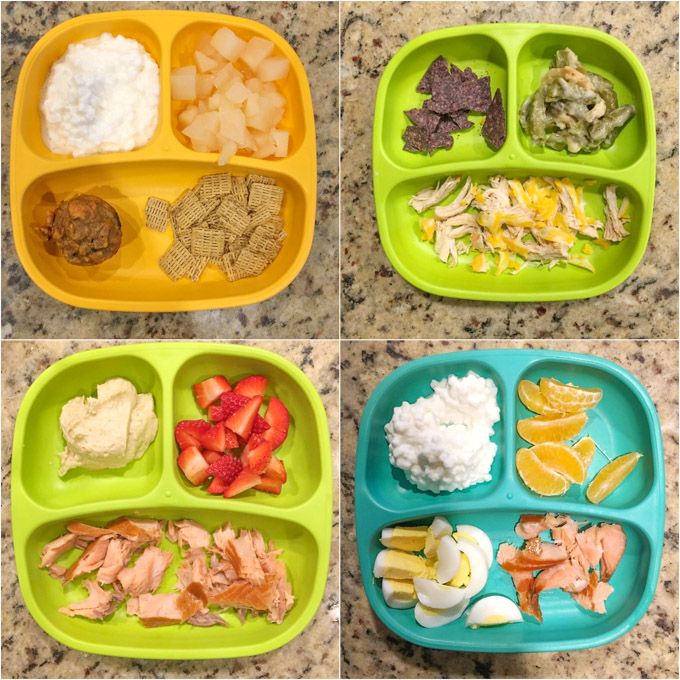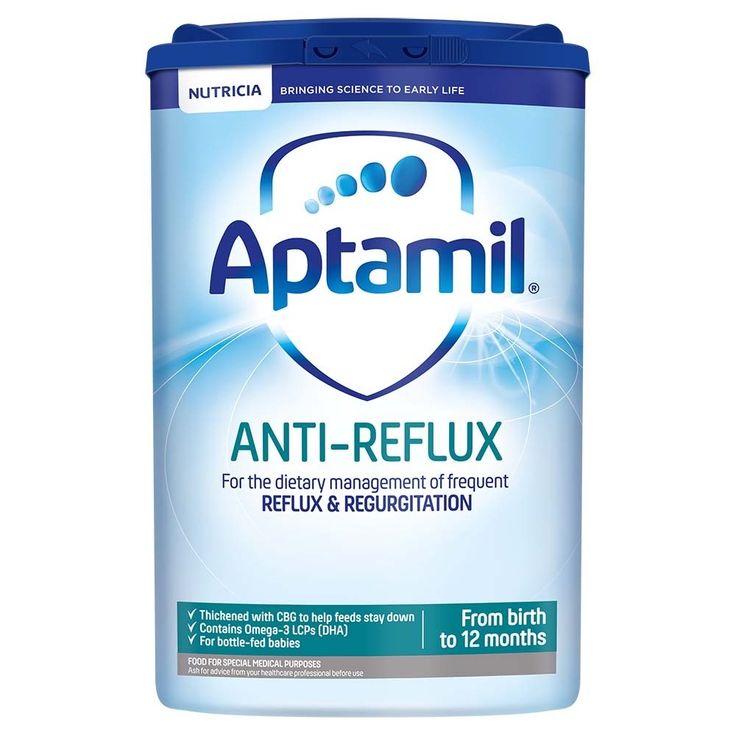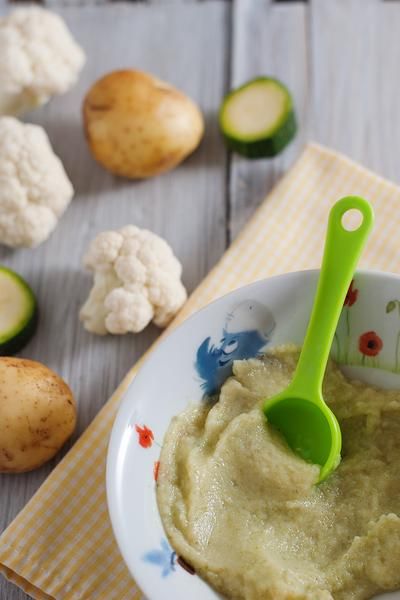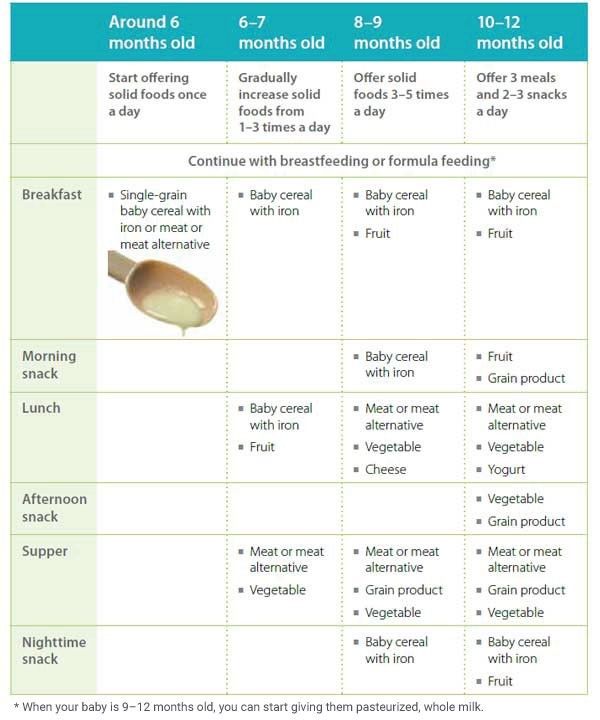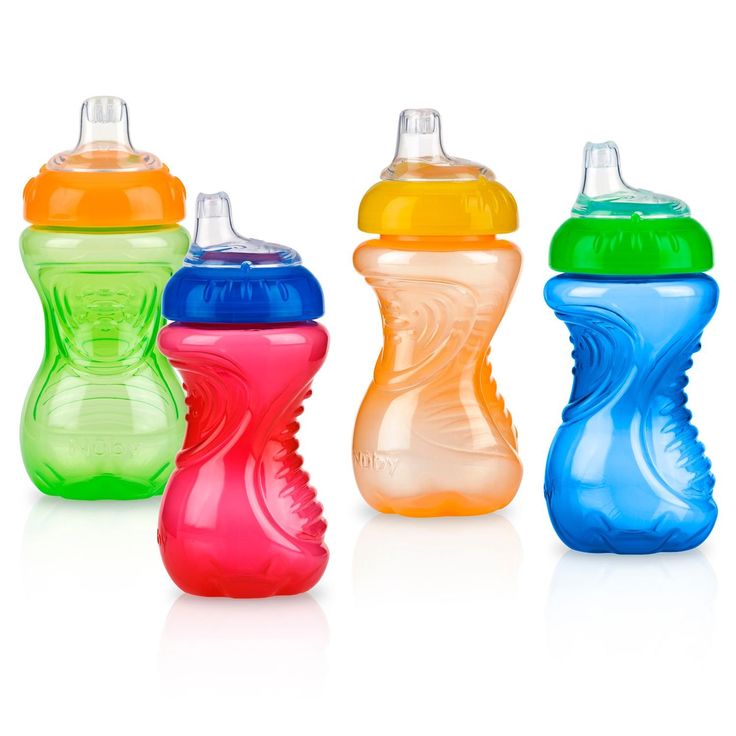Baby feeding age chart
Baby formula feeding chart: How much formula by weight and age
Is your baby getting too much or too little formula? It's an important question that worries many new parents, especially those with newborns. When deciding how much formula to give your baby, it's important to watch their hunger cues as well as looking at guidelines based on age and weight. In general, before they're eating solids, babies need 2.5 ounces of formula per pound of body weight each day.
These guidelines are for babies who are exclusively formula-fed for the first 4 to 6 months, and then fed a combination of formula and solids up to age 1. If your baby is getting a combination of breast milk and formula, talk to their doctor for separate advice.
Your pediatrician can tell you where your baby falls on the growth charts, make sure they're growing steadily on their own growth curve, and help you ensure that they're getting a healthy amount of formula. If you're ever worried about your baby's growth, behavior, or development, talk with their doctor.
How much formula for a newborn
For the first few days, offer your newborn 1 to 2 ounces of formula every 2 or 3 hours. (At first, newborns may only take a half ounce of formula at a time.)
After the first few days, give your newborn 2 to 3 ounces of formula every 3 to 4 hours.
Initially it's best to feed your formula-fed newborn on demand, whenever they show signs that they're hungry. Because your little one can't tell you when they want a bottle, you'll need to learn to read their hunger cues. Crying is often a late sign of hunger, so if you can, try to catch the earlier signs that it's time for a feeding.
Here are some hunger cues to watch for:
- Smacking or licking their lips
- Rooting (moving their jaw, mouth, or head in search of food)
- Putting their hands to their mouth
- Opening their mouth
- Fussiness
- Sucking on things
- Becoming more alert
- Crying
As time passes, your newborn will begin to develop a fairly regular feeding schedule. You'll become familiar with their cues and needs, and knowing when and how much to feed them will be much easier.
You'll become familiar with their cues and needs, and knowing when and how much to feed them will be much easier.
Formula feeding chart by weight
During the first 4 to 6 months, when your baby isn't eating solid foods, here's a simple rule of thumb: Offer 2.5 ounces of formula per pound of body weight every 24 hours, with a maximum of about 32 ounces.
| Weight | Ounces of formula |
|---|---|
| 6 pounds | 15 fl oz every 24 hours |
| 7 pounds | 17.5 fl oz every 24 hours |
| 8 pounds | 20 fl oz every 24 hours |
| 9 pounds | 22.5 fl oz every 24 hours |
| 10 pounds | 25 fl oz every 24 hours |
| 11 pounds | 27.5 fl oz every 24 hours |
| 12 pounds | 30 fl oz every 24 hours |
These numbers aren't rigid rules. They offer a rough estimate for what your baby may need. Some babies will grow well while taking less than the recommended amount, while others consistently need more.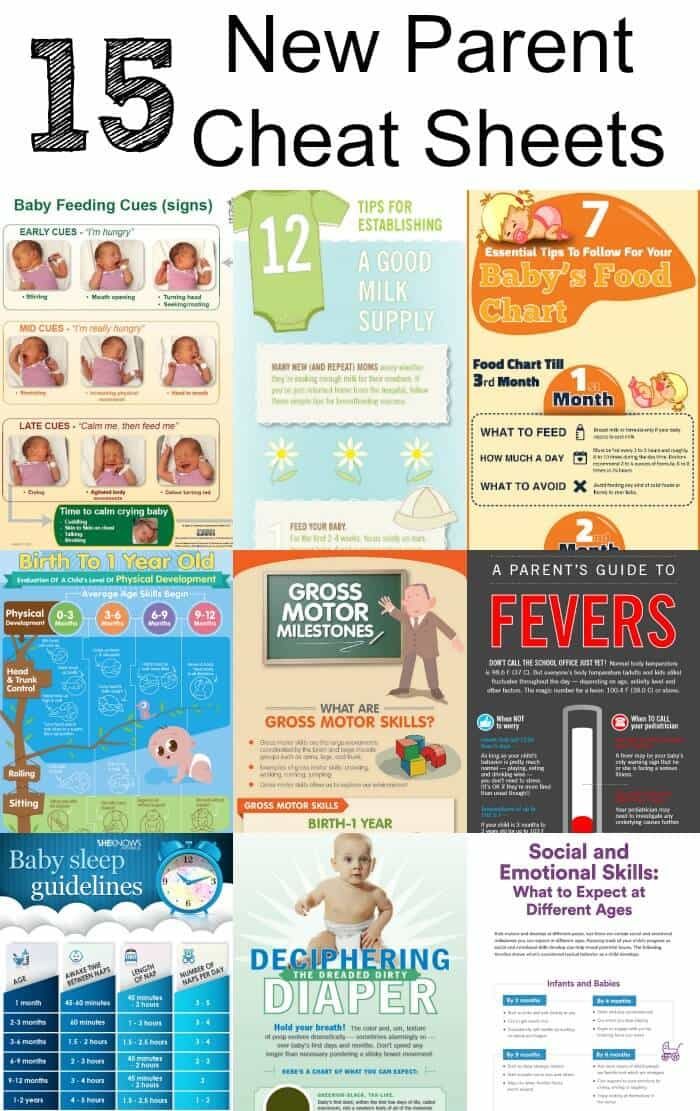 Your baby's daily feedings will also vary according to their individual needs – in other words, they may want a bit more on some days and a bit less on others.
Your baby's daily feedings will also vary according to their individual needs – in other words, they may want a bit more on some days and a bit less on others.
Formula feeding chart by age
Here are typical amounts per day based on age:
| Age | Ounces of formula |
|---|---|
| Full-term newborn | 2 ounces per bottle every 3 to 4 hours |
| 1 month old | 3 to 4 ounces per bottle every 3 to 4 hours |
| 2 month old | 4 to 5 ounces per bottle every 3 to 4 hours |
| 3 month old | 4 to 6 ounces per bottle every 3 to 4 hours |
| 4 month old | 4 to 6 ounces per bottle, 4 to 6 times a day |
| 5 month old | 4 to 6 ounces per bottle, 4 to 6 times a day |
| 6 month old | 6 to 8 ounces per bottle, 4 to 5 times a day |
| 7 month old | 6 to 8 ounces per bottle, 3 to 5 times a day |
From 8 months old until their first birthday, you can expect your baby to have 7 to 8 ounces per bottle, 3 to 4 times a day.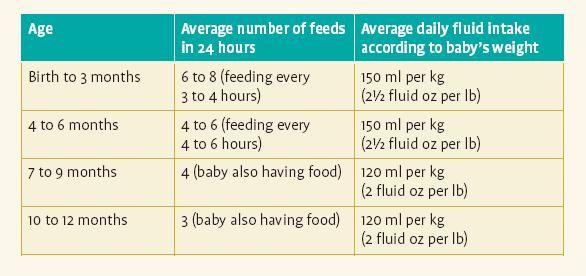
As your baby gets older – and their tummy gets bigger – they'll drink fewer bottles a day with more formula in each. It's important not to overfeed your baby so they'll stay at a healthy weight. Your baby shouldn't have more than 32 ounces of formula in 24 hours.
When they reach their first birthday, they can stop drinking formula and transition to cow's milk in a bottle, sippy cup, straw cup, or open cup. Limit your toddler to 16 to 24 ounces (2 to 2.5 cups) a day of whole milk, so they have room for other healthy foods.
Here are signs that your baby's getting all the formula they need:
- Steady weight gain. They continue to gain weight after their first 10 days and follow a healthy growth curve during their first year. (Most babies lose up to 7 to 10 percent of their birth weight in the first few days and then regain it by the time they're about 2 weeks old.)
- Happy baby. They seem relaxed and satisfied after a feeding.

- Wet diapers. They wet two to three diapers a day in the first few days after birth. Over the next few days, the amount should increase to at least five to six wet diapers a day.
Babies are usually good at eating the amount they need, but bottle-fed babies can drink too much at times. Here are the signs that they're getting too much formula:
- Vomiting after a feeding may be a sign that your baby had too much. (Spitting up is normal, vomiting isn't.)
- Tummy pain after a feeding can also be a sign of overfeeding. If your baby draws up their legs or their tummy seems tense, they may be in pain. (See other possible reasons for stomach pain in babies.)
If your baby seems to want to eat all the time, even after finishing a bottle, talk to your pediatrician. Using a pacifier may help soothe their need to suck.
Formula-feeding tips
- In general, babies eat when they're hungry and stop when they're full, so resist the temptation to encourage your baby to finish each bottle.
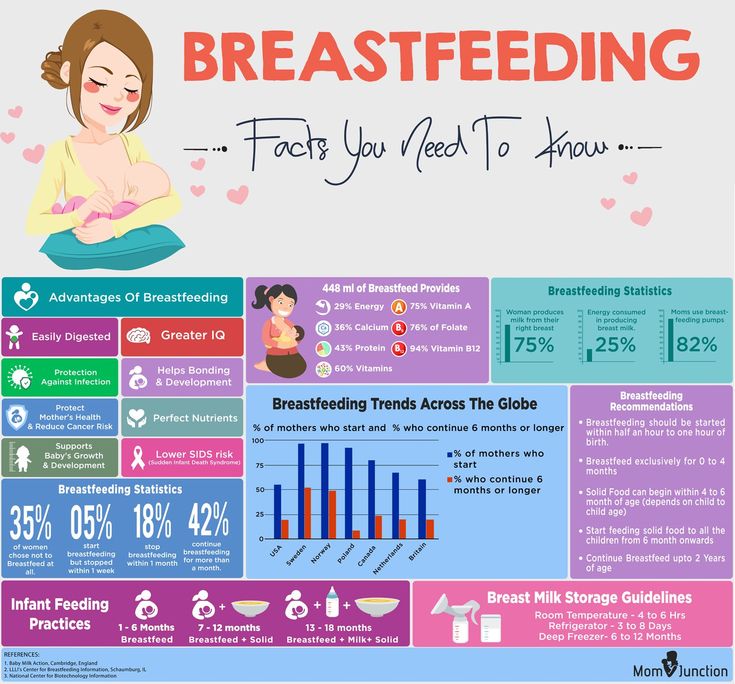 Overfeeding during infancy can contribute to obesity later in life.
Overfeeding during infancy can contribute to obesity later in life. - Don't respond to your baby's every cry with a bottle. They may be crying because their diaper is wet, they're cold or hot, they need to be burped, or they want to be close to you. (Learn more about why babies cry, and how to soothe them.)
- Your baby may be hungrier than usual during growth spurts. These typically occur 10 to 14 days after birth and around 3 weeks, 6 weeks, 3 months, and 6 months of age.
Read more:
- Formula Feeding Problem Solver
- How to safely store and use formula
How much should my baby eat? A guide to baby food portions
- Community
- Getting Pregnant
- Pregnancy
- Baby names
- Baby
- Toddler
- Child
- Health
- Family
- Courses
- Registry Builder
- Baby Products
Advertisement
Wondering how much to feed your baby? This can be hard to figure out, especially when you're starting solids and most of your baby's food ends up on your little one or the floor.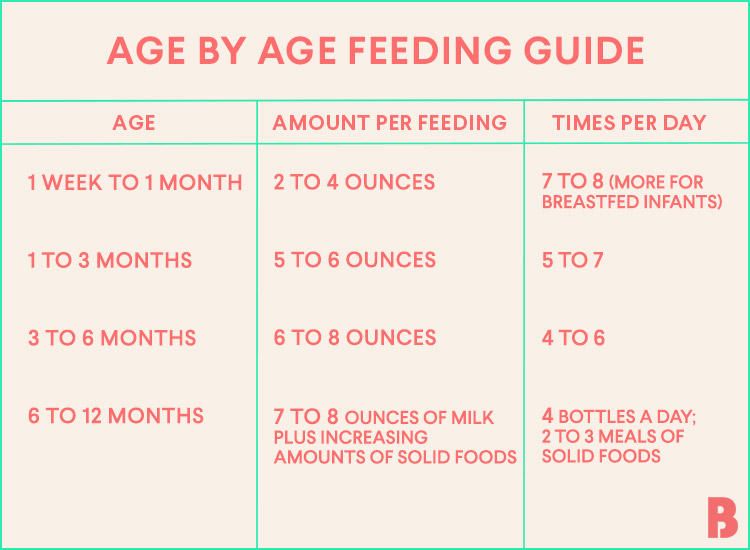 It's also difficult to determine how much an 8-month-old (or older baby) should eat – babies this age are more interested in solid foods but still get most of their nutrition from breast milk or formula. This visual guide to baby food portions can help you figure out how much your baby should eat at every stage.
It's also difficult to determine how much an 8-month-old (or older baby) should eat – babies this age are more interested in solid foods but still get most of their nutrition from breast milk or formula. This visual guide to baby food portions can help you figure out how much your baby should eat at every stage.
Photo credit: Karla Martin for BabyCenter
How much should my baby eat?
Do you worry that your baby is eating too little or too much? Your baby will self-regulate her food intake based on what their body needs, so let their appetite be your guide.
It's helpful to have a reference point, however. Here are photos of how much solid food a baby typically eats in a day. You can also ask your baby's doctor for feeding advice.
This visual guide shows:
- Portions for infants who are new to solids (typically 4 to 6 months)
- Two sample meals for a younger baby (6 to 8 months)
- Three sample meals and two snacks for an older baby (8 to 12 months) from a menu developed by the American Academy of Pediatrics (AAP)
Your little one may eat less or more than what's shown here. Your job is to provide a variety of healthy foods at regular intervals without pressure, and their job is to decide what and how much to eat.
Your job is to provide a variety of healthy foods at regular intervals without pressure, and their job is to decide what and how much to eat.
Photo credit: iStock.com / UntitledImages
Watch for signs your baby is full
Lots of factors – including activity level, growth spurts or plateaus, illness, and teething – will affect your baby's appetite, which can vary daily.
End feeding when they signal that they're done. Signs of being full include:
- Turning their head away
- Refusing to open their mouth for another bite after they've swallowed (resist the urge to encourage your baby to have one last spoonful)
- Leaning back in their chair
- Playing with the spoon or food rather than eating
Photo credit: Karla Martin for BabyCenter
How much a 4- to 6-month-old should eat
When your baby is developmentally ready for solids, typically around 4 to 6 months, talk to their doctor about introducing solid foods. The first bites are mostly about them getting used to the idea of having something different in their mouth.
The first bites are mostly about them getting used to the idea of having something different in their mouth.
- Start with a very small amount, 1 to 2 teaspoons, of a single-ingredient puree.
- Gradually increase to 1 to 2 tablespoons of food once a day.
- Follow your baby's fullness cues.
Popular first foods include pureed mango, banana, chicken, turkey, beef, peas, sweet potatoes, and infant cereal. It's up to you what food to start with, but wait 3 to 5 days between introducing each new food to make sure your baby doesn't have an allergic reaction or food intolerance. (And remember, no cow's milk or honey until age 1.)
Photo credit: Karla Martin for BabyCenter
How much a 6- to 8-month-old should eat
As your little one gets more comfortable with solids, you can increase the frequency of meals and variety of food.
- Transition from one to two meals a day, typically by 8 months.
- Over time, add a second food to each meal.
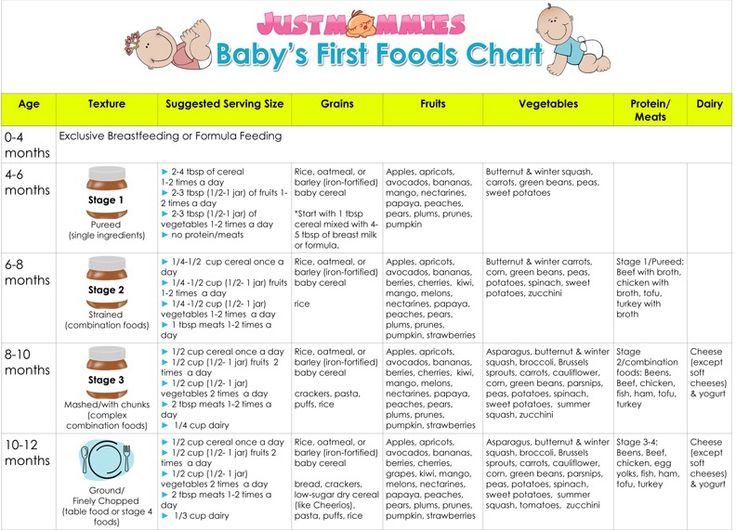 The photo above is an example of a meal with two foods.
The photo above is an example of a meal with two foods. - Once you've worked up to two meals with two foods each, aim for a balance of proteins, vegetables, fruits, and grains in their daily diet.
- Whenever you introduce a new food, start with a very small amount, a teaspoon or two, to allow your baby to get used to its flavor and texture.
- Start with a soupy consistency. Gradually add more texture as their eating skills improve.
Expect their intake of breast milk or formula to go down. They'll start drinking less of it as they eat more solid foods. Provide healthy options at mealtimes, and let them choose how much to eat.
Note: The jars in all photos are standard 4-ounce baby food jars.
Photo credit: Karla Martin for BabyCenter
Breakfast for a younger baby (6 to 8 months)
Cereal and fruit make an easy combination for a morning meal.
Grain: Iron-fortified, whole-grain infant cereal is a popular first grain.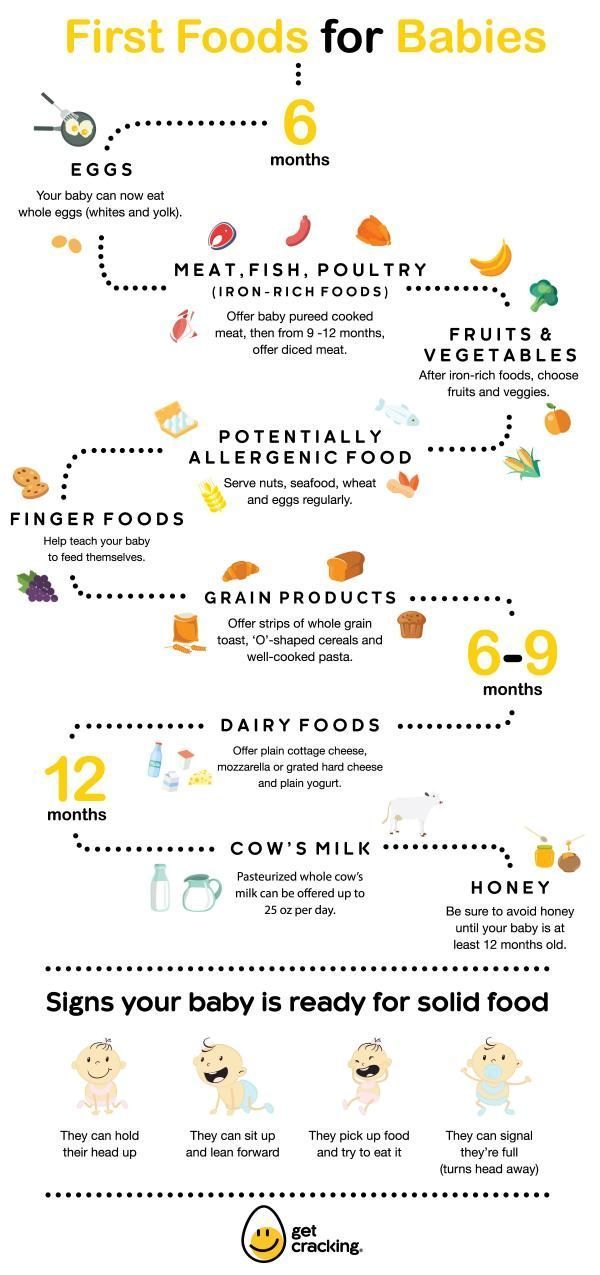 At 6 months, a typical daily portion of infant cereal mixed with breast milk or formula might be 2 to 3 tablespoons, increasing to 4 to 8 tablespoons (1/4 to 1/2 cup) by 8 months. (It's best to avoid rice cereal, though.)
At 6 months, a typical daily portion of infant cereal mixed with breast milk or formula might be 2 to 3 tablespoons, increasing to 4 to 8 tablespoons (1/4 to 1/2 cup) by 8 months. (It's best to avoid rice cereal, though.)
Fruit: Babies love the natural sweetness of fruits like pears, apples, berries, prunes, and stone fruits. Between 6 and 8 months, a baby will typically transition from about 2 to 3 tablespoons of fruit puree a day to 4 to 8 tablespoons (1/4 to 1/2 cup) of mashed or minced fruit.
Photo credit: Karla Martin for BabyCenter
Dinner for a younger baby (6 to 8 months)
If you serve a grain and fruit in the morning, consider offering a protein-rich food and vegetable later in the day. Your child may eat more or less than the amounts shown.
Protein: A baby might transition from eating 1 to 2 tablespoons of meat puree at 6 months to 2 to 4 tablespoons at 8 months, for example. Other good protein sources include cheese, unsweetened plain whole-milk yogurt, tofu, beans, and lentils.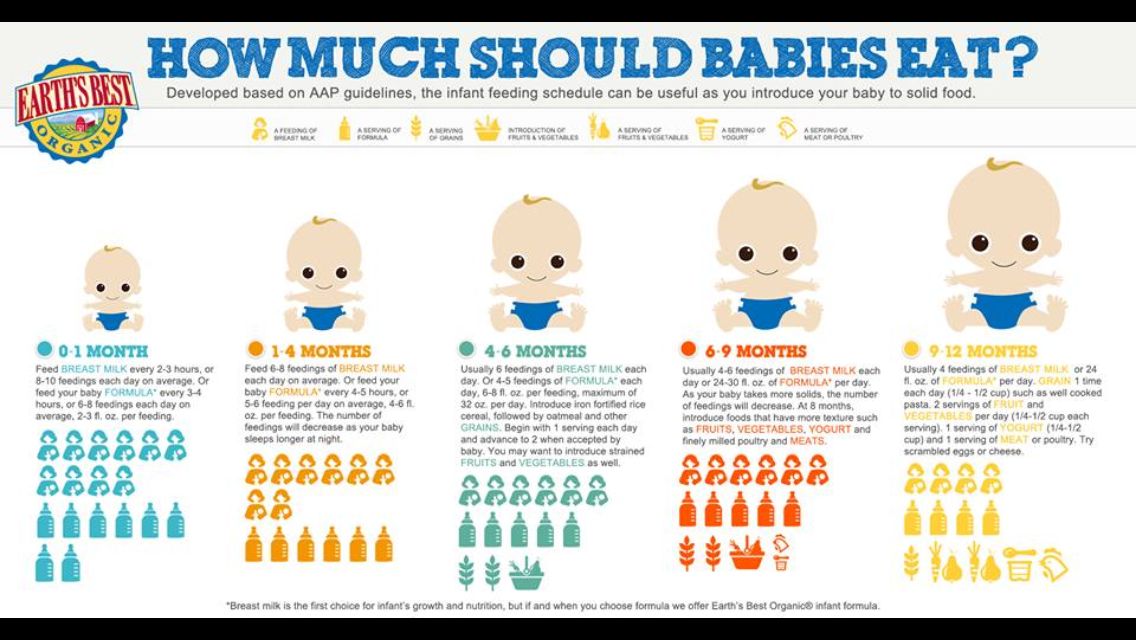
Vegetables: Between 6 and 8 months, a baby will typically transition from about 2 to 3 tablespoons of vegetable puree a day to 4 to 8 tablespoons (1/4 to 1/2 cup). Try classic favorites like carrots, spinach, or butternut squash, as well as less traditional first foods such as parsnips, beets, or asparagus.
As your child's eating skills improve, gradually add more texture by dicing or mincing foods.
Photo credit: Karla Martin for BabyCenter
How much an 8- to 12-month-old should eat
By 8 months or so, your baby is likely getting the hang of eating and needs to eat more calories to support their growing body. But since their little belly can't hold a lot of food, they'll need to eat more often. Every baby is different, but this may be a good time to try offering a third solid food meal.
During this period:
- Continue to give your baby breast milk or formula.
- Add morning and afternoon snacks. (Some babies this age are happy with breast milk or formula as their snack, while others gravitate toward solid foods.
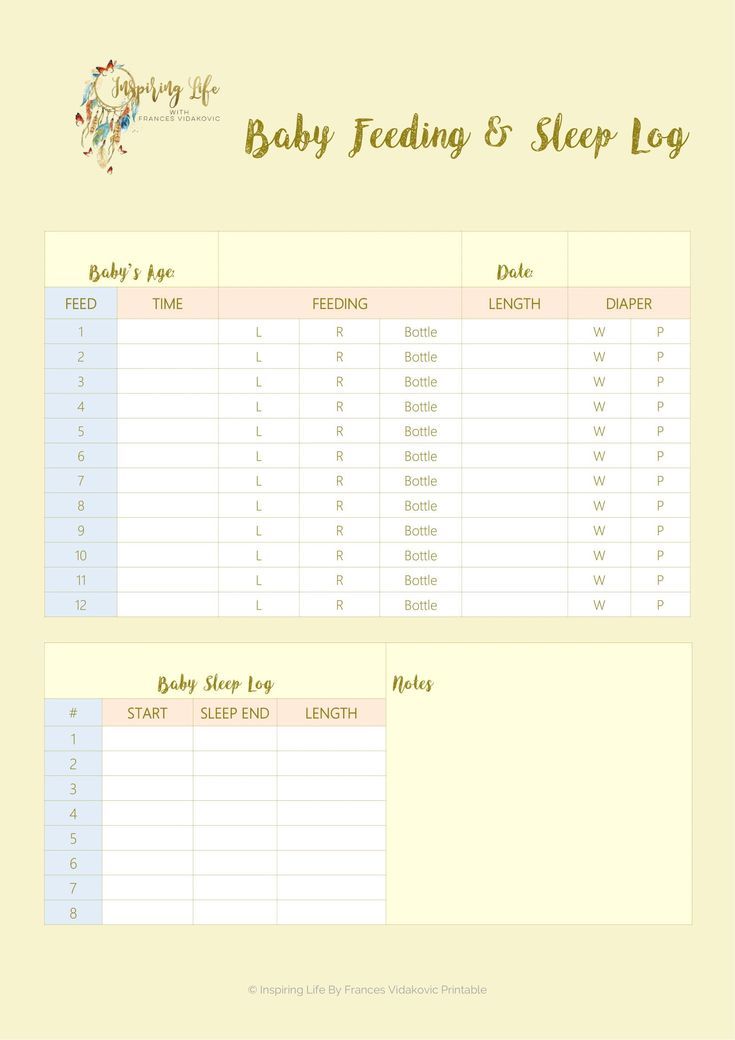 ) Once you've added a third meal and snacks, your baby will be eating or drinking something about every two to three hours.
) Once you've added a third meal and snacks, your baby will be eating or drinking something about every two to three hours.
- Continue to aim for a mix of proteins, vegetables, fruits, and grains.
- Introduce coarser and chunkier textures, for example, by dicing or mincing food instead of pureeing it, and graduate to soft finger foods as your baby's eating skills improve.
- Avoid foods with added sugars. Check the Nutrition Facts label on packaged foods, and try to steer clear of foods that list 1 gram or more of "Added Sugars."
- Provide healthy options, and let your baby choose how much to eat.
To visualize daily portions for an 8- to 12-month-old, check out the following photos of a typical day's menu for a baby this age, developed by the AAP.
Your child may eat more or less than these amounts. If you're concerned about how much your baby is eating, talk to their doctor for advice.
Photo credit: Karla Martin for BabyCenter
Breakfast for an older baby (8 to 12 months)
The AAP sample menu for a baby 8 to 12 months features a breakfast consisting of:
- 4 to 8 tablespoons (1/4 to 1/2 cup) whole-grain infant cereal mixed with formula or breast milk
- 4 to 8 tablespoons (1/4 to 1/2 cup) diced fruit
Note: This is an example.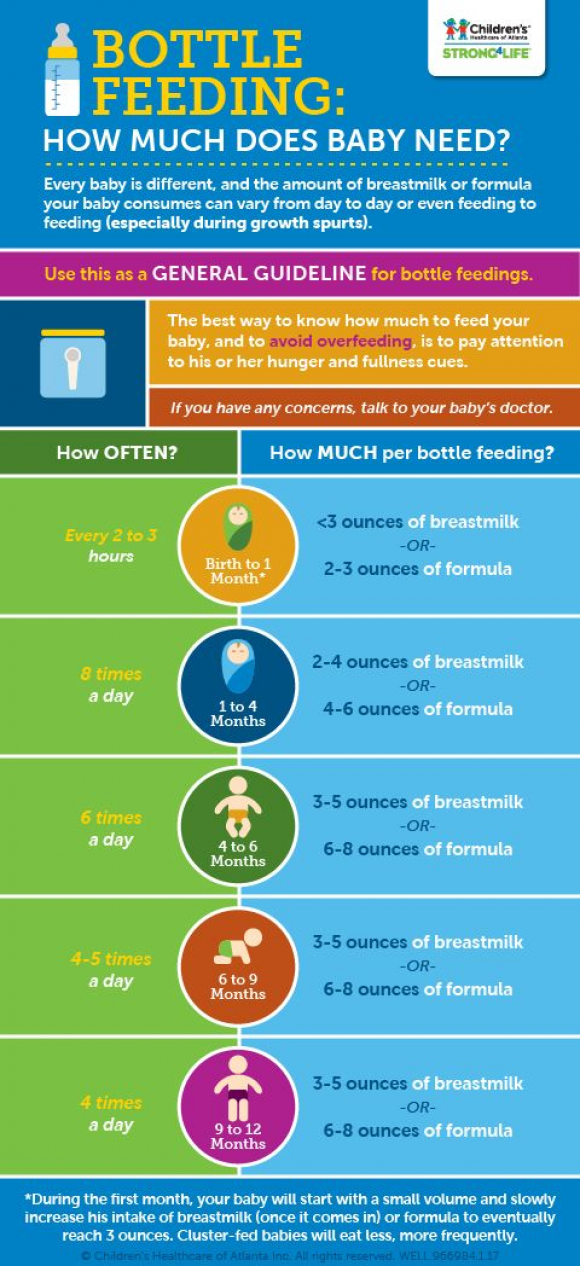 Your baby may eat different foods and amounts.
Your baby may eat different foods and amounts.
Photo credit: Karla Martin for BabyCenter
Morning snack for an older baby (8 to 12 months)
The AAP sample menu for a baby 8 to 12 months features a morning snack consisting of:
- 4 tablespoons (1/4 cup) diced cheese or cooked vegetables
Note: This is an example of a morning snack, which babies typically add sometime between 8 and 12 months. Your baby may eat different foods and amounts.
Photo credit: Karla Martin for BabyCenter
Lunch for an older baby (8 to 12 months)
The AAP sample menu for a baby 8 to 12 months features a lunch consisting of:
- 4 to 8 tablespoons (1/4 to 1/2 cup) unsweetened plain whole-milk yogurt or cottage cheese, or minced meat
- 4 to 8 tablespoons (1/4 to 1/2 cup) diced or mashed yellow or orange vegetable
Note: This is an example. Your baby may eat different foods and amounts.
Photo credit: Karla Martin for BabyCenter
Afternoon snack for an older baby (8 to 12 months)
The AAP sample menu for a baby 8 to 12 months features an afternoon snack consisting of:
- 4 tablespoons (1/4 cup) diced fruit or unsweetened plain whole-milk yogurt
- 1 whole-grain teething biscuit or cracker
Note: This is an example of an afternoon snack, which babies typically add sometime between 8 and 12 months.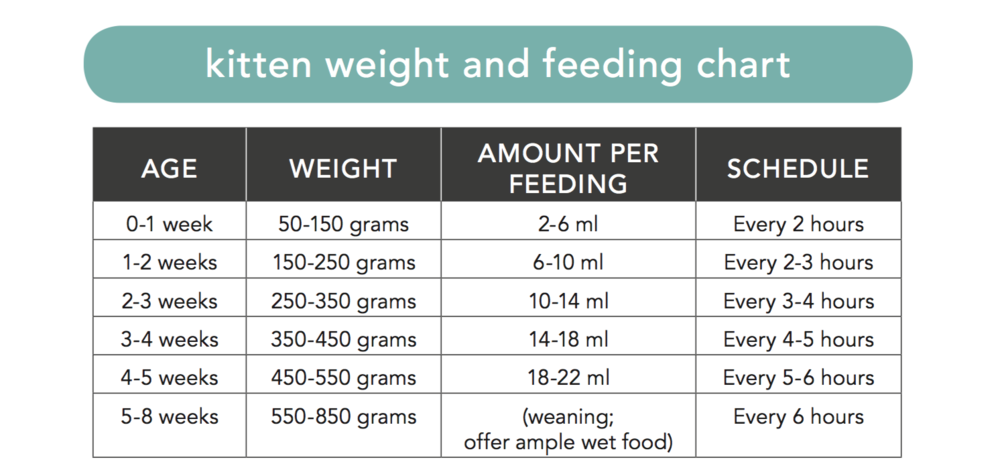 Your baby may eat different foods and amounts.
Your baby may eat different foods and amounts.
Photo credit: Karla Martin for BabyCenter
Dinner for older baby (8 to 12 months)
The AAP sample menu for a baby 8 to 12 months features a dinner consisting of:
- 4 tablespoons (1/4 cup) minced or ground poultry or meat, or diced tofu
- 4 to 8 tablespoons (1/4 to 1/2) cup diced, cooked green vegetable
- 4 tablespoons (1/4 cup) noodles, pasta, rice, or potato
- 4 tablespoons (1/4 cup) diced fruit
Note: This is an example. Your baby may eat different foods and amounts.
Photo credit: Karla Martin for BabyCenter
How much should my baby drink once they start eating solids?
Breast milk or formula will fully meet your child's hydration needs until they're about 6 months old. They may start drinking less as solid foods become a bigger part of their diet. Here are typical daily amounts by age – your baby's intake may be different, however.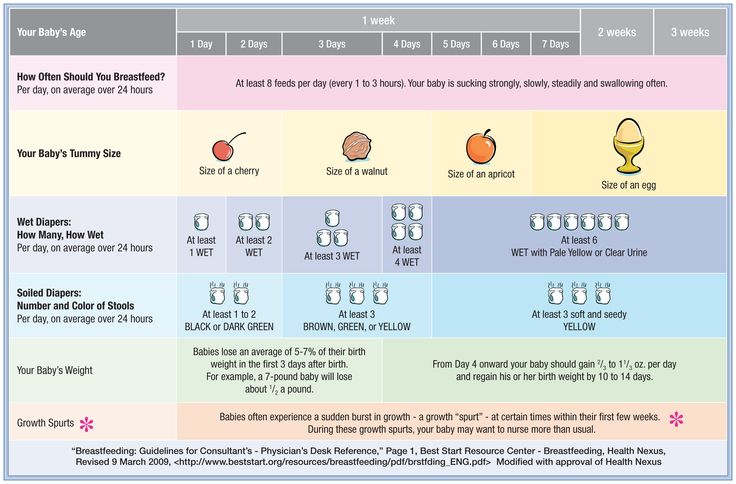
6 to 8 months: 24 to 32 ounces of formula, or continued breastfeeding on demand
8 to 12 months: 24 ounces of formula, or continued breastfeeding on demand
Water: You can offer your baby water once they start eating solids, but let them self-regulate how much they drink. The Centers for Disease Control and Prevention (CDC) recommends giving babies who are 6 to 12 months old 4 to 6 ounces of water a day, but what your baby decides to drink may vary. They may drink more on a hot day, for example.
Avoid juice: Juice isn't recommended for babies younger than 12 months.
Photo credit: iStock.com / SDI Productions
Your baby has the final say
Keep in mind that these portions are an estimate. The truth is, every baby is different, and there's no set amount of food that's appropriate for every baby at every stage.
If you're worried about whether your baby is eating enough – or too much – the best advice is to look for and respond to signs that your baby is full.
Your baby's doctor will chart their weight gain at regular intervals. If the doctor sees a consistent growth curve and doesn't have other concerns, your baby is most likely eating the right amount of food.
Hungry for more?
Age-by-age guide to feeding your baby
The 10 best foods for babies
The worst foods for babies
Using spices and seasoning in baby food
Elizabeth Dougherty
Elizabeth Dougherty is a veteran parenting writer and editor who's been contributing to BabyCenter since 2015. She's an intrepid traveler, devoted yogi, and longtime resident of Silicon Valley, where she lives with her husband and son.
Advertisement | page continues below
Breastfeeding norms for newborns
When a child is born in a family, parents have many questions about the proper care of the baby. One of the most frequently asked questions is related to breastfeeding norms.
Dry initial milk formula adapted by Valio Baby 1 NutriValio for feeding children from birth to 6 months More
Follow-up dry milk formula adapted by Valio Baby 2 NutriValio for feeding children from 6 to 12 months Read more
Dry milk drink "Baby milk" Valio Baby 3 NutriValio for feeding children over 12 months Read more
Starting from the first feeding and in the first days of life, the child receives colostrum. It is very nutritious. The newborn eats little, but remains full. The volume of the stomach in babies in the first days of life does not exceed 10 ml. In one day, a baby eats about 100 ml of breast milk. This volume is increasing every day. For a baby older than 10 days, it is very easy to calculate the feeding rate. To do this, you need to multiply the number of days lived by 10. The amount of food eaten per day should be 1/5 of the baby's body weight.
It is very nutritious. The newborn eats little, but remains full. The volume of the stomach in babies in the first days of life does not exceed 10 ml. In one day, a baby eats about 100 ml of breast milk. This volume is increasing every day. For a baby older than 10 days, it is very easy to calculate the feeding rate. To do this, you need to multiply the number of days lived by 10. The amount of food eaten per day should be 1/5 of the baby's body weight.
To determine the rate of feeding children from the first month of life to a year, experts have developed the following table for calculating the volume of feeding:
You can also determine the correct amount of food for feeding a baby, focusing on the age, weight, behavior and development of the child.
At present, the so-called free-feeding regimen is recommended, i.e., to give the child a breast not according to the schedule, but at his first request, including at night. This allows the baby to take full advantage of the first milk - colostrum, which is characterized by a high concentration of antimicrobial factors, which prevents the possibility of infection of the newborn.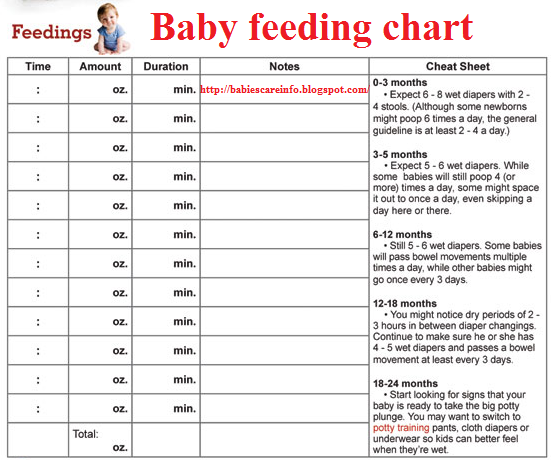 Colostrum, which contains a high percentage of protein and minerals, even in small quantities satisfies the nutritional needs of the child. In addition, the entry of colostrum into the child's digestive tract ensures a faster "maturation" of the intestinal mucosa. A mother can learn to correctly identify the "hungry" cry of her child: at the same time, he turns his head in search of the mother's breast, smacks his lips, cries loudly, insistently. Usually, with a free-feeding regimen, a newborn baby receives breasts up to 10-12 times a day. on, initiating the secretion and release of milk. It has been shown that with free feeding, the volume of milk is 1.5 times higher than with hourly feeding. Subsequently, as the child grows, he usually develops his own feeding regimen by 2-3 months - from 6 to 8 times a day and, as a rule, without a night break. Observations show that with this feeding regime, children are distinguished by calm behavior, good mood, sleep soundly, give normal weight gain, and mothers produce more breast milk and the ability to secrete it lasts longer.
Colostrum, which contains a high percentage of protein and minerals, even in small quantities satisfies the nutritional needs of the child. In addition, the entry of colostrum into the child's digestive tract ensures a faster "maturation" of the intestinal mucosa. A mother can learn to correctly identify the "hungry" cry of her child: at the same time, he turns his head in search of the mother's breast, smacks his lips, cries loudly, insistently. Usually, with a free-feeding regimen, a newborn baby receives breasts up to 10-12 times a day. on, initiating the secretion and release of milk. It has been shown that with free feeding, the volume of milk is 1.5 times higher than with hourly feeding. Subsequently, as the child grows, he usually develops his own feeding regimen by 2-3 months - from 6 to 8 times a day and, as a rule, without a night break. Observations show that with this feeding regime, children are distinguished by calm behavior, good mood, sleep soundly, give normal weight gain, and mothers produce more breast milk and the ability to secrete it lasts longer.
How can you tell if your baby is getting enough milk?
There is a so-called "wet diaper test". If the baby receives the necessary daily nutritional intake, he pees an average of 16-18 times. At the same time, 6-8 or more richly filled diapers are usually spent per day.
You can also determine if a child is getting enough nutrition by observing how much weight he gains each month. Infants from 2 to 13 weeks of age should gain between 170 and 200 grams per week.
Keep track of whether the baby grows out of the clothes he wears and out of diapers. If the baby eats properly, then on the 10-14th day of life, he returns to his original weight at birth. Babies who get enough food also sleep well and look cheerful and cheerful.
#PROMO_BLOCK#
Learn more about proper breastfeeding and check out our blog for tips.
3.08 38
Power supplyShare:
Ivargizova Oksana
Medical Institute.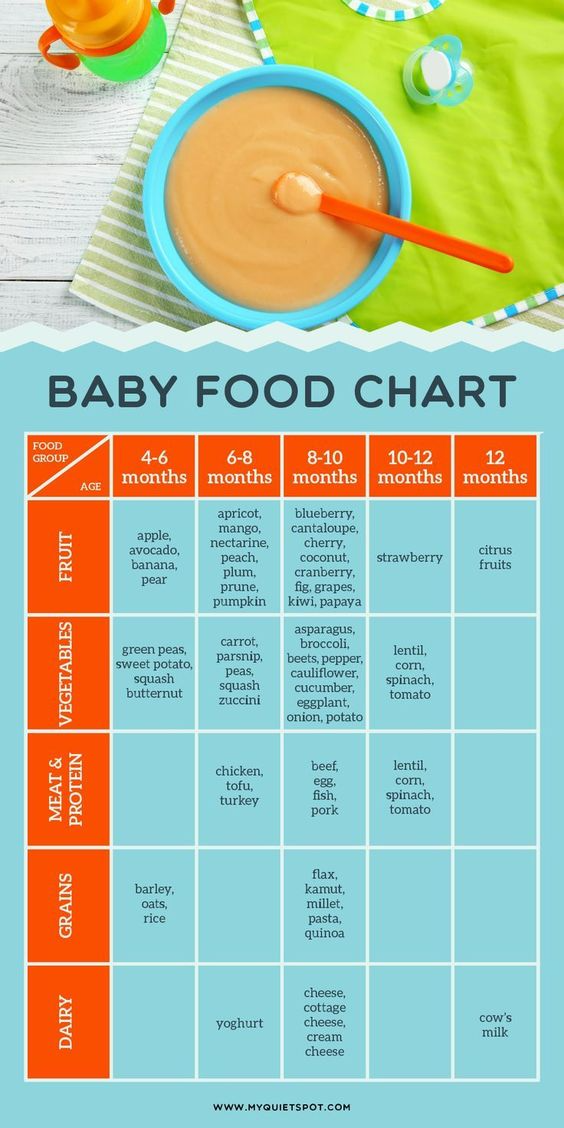 Pavlova, specialization - pediatrics
Pavlova, specialization - pediatrics
Author: Reetta Tikanmäki
Palm oil in baby food
Infant milk formulas are made from cow's milk. However, in terms of fat composition, it differs significantly from that of the mother.
Read
Author: Ivargizova Oksana
How to choose milk formula for a baby
Breast milk is the best food for a newborn baby. It contains all the necessary nutritional components that fully meet the needs of the child and are necessary for his healthy and harmonious development.
Read
Show all
Union of Pediatricians of Russia
Nutrition for children aged 1 to 3 years
The period from 1 to 3 years of life is a crucial stage in the transition to an adult type of nutrition, which has certain features.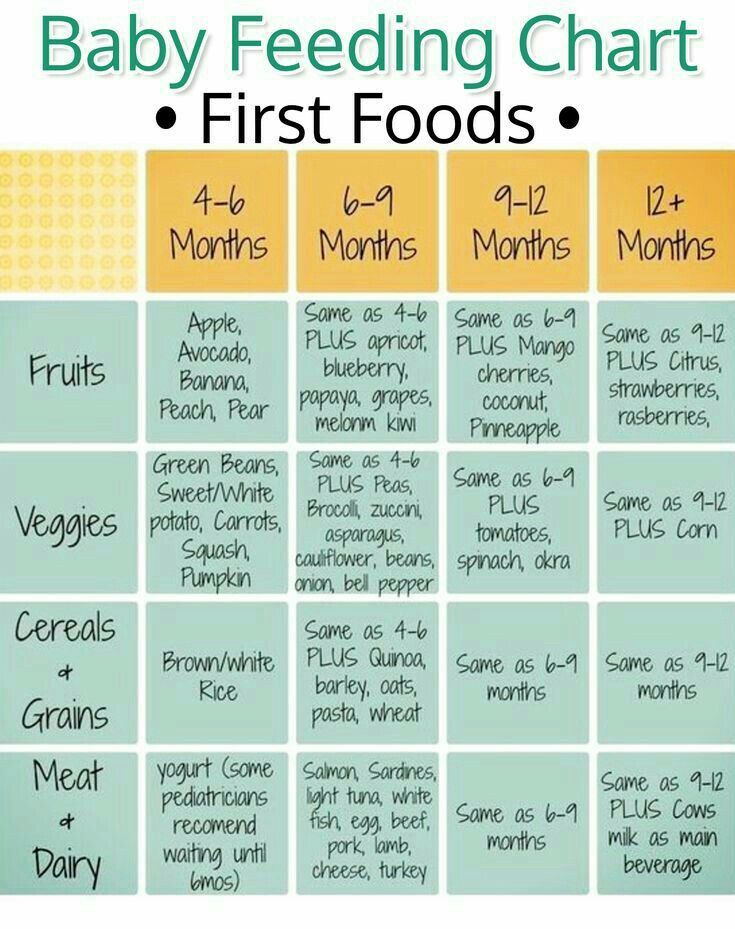 In order to ensure that all the necessary nutrients enter the child's body and at the same time prevent an excess of individual nutrients, nutrition should be balanced and varied.
In order to ensure that all the necessary nutrients enter the child's body and at the same time prevent an excess of individual nutrients, nutrition should be balanced and varied.
The daily amount of food for children aged 1 to 1.5 years should be 1000-1200 g, from 1.5 to 3 years - 1200-1500, the amount of food in one feeding should not exceed 300-350 ml. The diet consists of three main meals per day and two snacks. It is considered optimal when breakfast is 25% of the total energy density of the diet, lunch is 30–35%, dinner is 20%, and additional meals are about 10%. In general, the child can eat the same food as the rest of the family.
In the diet of a child of 1-3 years of age must be present daily : animal or poultry meat, dairy and sour-milk products, vegetables, fruits, bread, cereals, vegetable and butter; fish and eggs are included in the diet 2-3 times a week.
Cereal products: bread - 2-3 servings per day, cereals and side dishes - 1 time per day
Fruit and/or vegetables: at least 5 times a day
Dairy products: at least 3 servings per day (including those used to make cereals, yoghurts, fermented milk drinks, cottage cheese, infant formula or breast milk).
Domestic pediatricians recommend, when compiling a diet for children aged 1–3 years, preference should be given to specialized children's dairy products of industrial production that meet high quality requirements and safety indicators for this age. Most children's dairy products are additionally enriched with vitamins and/or minerals and other biologically active components, taking into account the physiological needs of children of this age. At the same time, in foreign recommendations, children over 1 year old are offered the gradual introduction of whole cow's milk, which is rich in fats necessary for proper growth and development, the absorption of vitamins A and D, the development of the brain and nervous system of the child.
Meat dishes: 2-3 times a day
Fish dishes: 2-3 servings per week
Eggs: 2-3 per week
Dietary fats: 3-4 teaspoons of butter and/or vegetable oils per day
When cooking, use the minimum amount of salt and sugar, and do not add them to industrial products.


